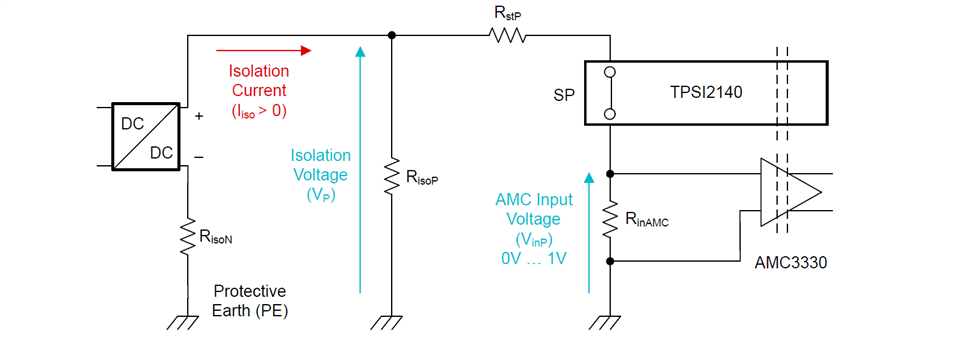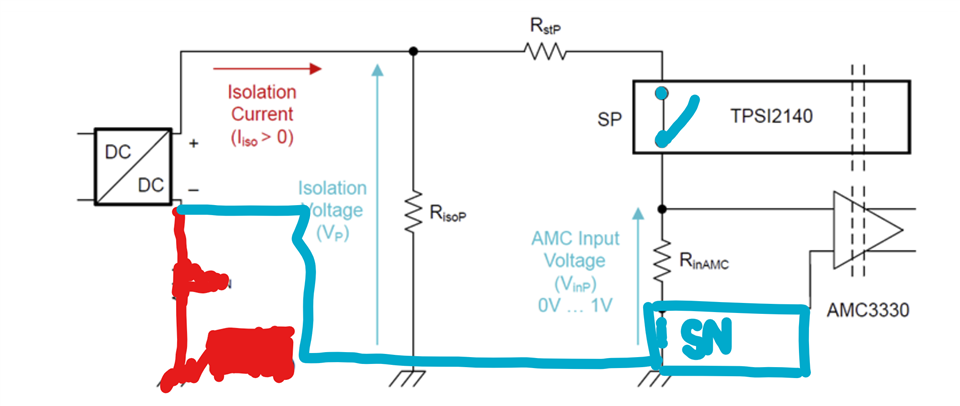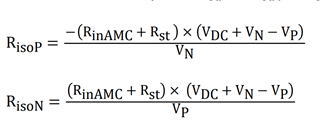Other Parts Discussed in Thread: AMC3330
For the TIDA-010232 what is the order of operation in terms of closing and opening the switch.
Based on the sample code and diagram below it seems like if you want V+ reading you close contactors for + and open - and vice versa.

This only works under the assumption that there is a valid R for isoN and isoP.
If the resistance is zero ie. only the positive end has a valid resistance, theoretically, you cannot have a valid reading since there is no voltage potential across RinAMC, since RisoN is zero the loop cannot be connected since there is not path to PE.
The only way would be to close SN and open SP as that way there is a path from PE.
I was wondering if there was any clarification regarding those situations where only 1 pole of the DC/DC is being faulted




